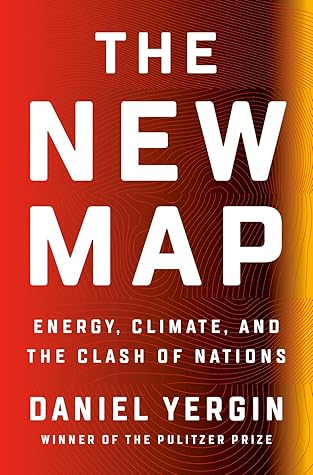More on this book
Community
Kindle Notes & Highlights
Read between
July 6 - July 9, 2022
Abu Dhabi is one of seven emirates that make up the United Arab Emirates (UAE), which was formed in 1971 when the British withdrew their military forces from the Gulf. Dubai and Abu Dhabi are the two best-known of the emirates. Dubai is the region’s commercial hub and a global city for the globalized world economy. Abu Dhabi, which is the largest of the emirates, is also the richest, owing to oil. The UAE’s location on the sea, and historically being part of regional trading networks before oil, is often cited as explanation for its being more open and integrated with the world. The UAE may be
...more
Volvo is owned by Geely, a major Chinese automaker, and this positions Volvo for the new electric vehicle game in the world’s biggest auto market.
There are two critical gating items for mass adoption. The first is the battery itself. “Nothing else has more leverage to the electric vehicle business than the cost of batteries,” said someone who knows—Tesla’s J. B. Straubel. If one only looks at operating costs, running a car on electricity per mile driven is cheaper than gasoline. But it is much more expensive to store the energy. In an internal combustion car, the energy is stored in the gas tank. In the EV, it is stored in the battery. Costs for batteries dropped significantly—by over 50 percent—between 2015 and 2019 to about $180 per
...more
hundred miles or more on a charge costs around $11,000, which is expensive and not yet competitive without subsidies. It is thought that at around $100 per kilowatt-hour, the battery would be competitive with the internal combustion engine. The recent MIT study on mobility posits that the gap may not be closed until 2030.28 There is much debate as to how much further these costs can come down without technical breakthroughs. One path is through greater scale in manufacturing, and new factories are being added at impressive rates. But there are also concerns around the supply chain of some
...more
This highlight has been truncated due to consecutive passage length restrictions.
DARPA—the Advanced Research Projects Agency of the U.S. Department of Defense.
In Iraq and Afghanistan, American soldiers riding in tanks and trucks were being maimed and killed by IEDs. In response, the Defense Department was determined to develop vehicles that would not need drivers—what would become known as autonomous vehicles. And that’s why these zombie vehicles were crisscrossing the streets in an abandoned Air Force base in the California high desert.
DARPA had been established in 1958, in response to the Soviets beating the United States into space with Sputnik, the first satellite. Its mission was to ensure that the United States would from then on be “the initiator and not the victim of strategic technological surprises.” Working with universities and industry, it funded frontier research “in breakthrough technologies for national security.” Its extraordinary record extended from advanced computing and stealth bombers to GPS systems. At the beginning of this century, DARPA decided to offer cash prizes to fire up competitive juices for
...more
the Intergovernmental Panel on Climate Change, known as the IPCC, under the auspices of the United Nations. This is a self-governing network of scientists and researchers that issues periodic reports,
The fifth IPCC report, issued in 2014, was the starkest yet. “Human influence on the climate system is clear,” and “emissions of greenhouse gases are the highest in history. Recent climate changes have had widespread impacts on human and natural systems. Warming of the climate system is unequivocal, and since the 1950s, many of the observed changes are
unprecedented over decades to millennia.”
The Paris Climate Conference—otherwise known as United Nations COP 21—convened
The United States and China—together responsible for over one-third of global greenhouse gas emissions—had until then been adversaries on climate. China and other developing nations had asked why they should “pay” for all the emissions that the developed nations had been putting into the atmosphere for a century by restraining their own energy use and thus holding back their own development. But in November 2014, standing together in the Great Hall, Barack Obama and Xi Jinping announced a joint commitment that their two countries would adopt significant new measures to reduce emissions. But
...more
facilitated by increased natural gas use in power generation. China’s carbon emissions could continue to rise, peaking only by 2030.5
Altogether, representatives of 195 countries and the European Union, joined at various times by 150 leaders of countries, attended the Paris conference, which began on November 30, 2015, to be f...
This highlight has been truncated due to consecutive passage length restrictions.
What they had adopted was not a treaty but rather a compact to take actions that were intended to prevent temperatures from rising to two degrees centigrade above preindustrial levels in this century—and, it was hoped, no more than one and a half degrees. It was up to each country to come up with its own “nationally determined contribution”—what became known as NDCs—based upon its particular situation, laws, regulations, volition, and mood. These NDCs would not be binding, but rather voluntary. “Nonbinding” was crucial for Barack Obama, for a treaty would have to be submitted to the U.S.
...more


